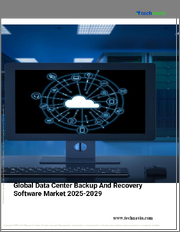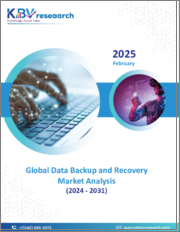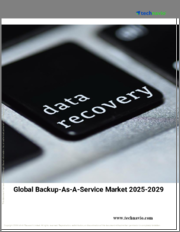
|
시장보고서
상품코드
1502734
CRaaS(Cyber Recovery as a Service) : 확장 가능한 방식으로 사이버 복원력을 강화Cyber-Recovery as a Service: Enhancing Cyber-Resiliency in a Scalable Fashion |
||||||
이 IDC Perspective는 아시아태평양(일본 포함)(APJ) 기업의 CRaaS(Cyber Recovery as a Service) 도입률, 도입의 이점 및 과제에 대해 지역, 하위 지역, 산업별 관점에서 살펴봅니다. 아시아태평양은 기업, 정부, 주요 인프라를 겨냥한 지능형 사이버 공격이 급증하면서 사이버 위협의 핫스팟으로 떠오르고 있습니다. 이 지역의 급속한 디지털 전환과 다양하고 확장된 경제 환경은 사이버 범죄자들에게 매력적인 표적이 되고 있습니다. 이러한 어려운 상황 속에서 APJ 기업들은 비즈니스와 데이터를 보호하기 위해 탄탄한 사이버 복원력 전략에 투자해야 합니다. 우선, 사이버 사고의 영향을 줄이고 신속한 복구를 보장하는 종합적인 솔루션을 제공하는 CRaaS 방식에 투자하는 것이 매우 중요합니다. IDC FutureScape: Worldwide Cloud 2023 Predictions - APEJ Implications에 따르면, 랜섬웨어 공격의 빈도 증가와 DIY로는 쉽게 이용할 수 없는 고급 복구 전략의 필요성으로 인해 2027년까지 A2000의 30%가 CRaaS를 도입하게 됩니다. IDC Asia/Pacific의 수석 리서치 매니저인 Sakshi Grover는 다음과 같이 말했습니다. "APJ 기업들은 재해복구뿐만 아니라 성숙한 관점에서 CRaaS에 점점 더 많은 관심을 기울이고 있습니다. 조직은 더 이상 기존 방식에 의존할 수 없으며, CRaaS는 증가하는 사이버 위협으로부터 보호하는 데 필요한 고급 도구와 전문 지식을 제공합니다. 기업은 백업 및 불변성뿐만 아니라 위협 인텔리전스, 중복 제거 및 압축, 멀티 클라우드 지원, 플레이북, 협업 도구와 같은 요소도 고려해야 합니다. 최근 조사에 따르면, ANZ 기업들은 기존 복구 솔루션에 비해 복구 시스템 관리 및 유지보수가 간소화되고 비용 효율적이기 때문에 CRaaS를 선호하는 것으로 나타났습니다. 그러나 일본 기업들은 사이버 위협 및 공격에 대한 복원력 강화와 비용 효율성을 우선순위에 두고 있습니다. 홍콩, 마카오, 광둥성을 연결하는 그레이터 베이 지역(Greater Bay Area)과 같이 국경 간 무역과 협업이 활발한 지역에서는 동기화된 강력한 사이버 복구 솔루션에 대한 요구가 증가하고 있습니다. 한국 기업들은 CRaaS 모델의 확장성과 유연성을 이유로 CRaaS를 선호하고 있습니다."
주요 요약
상황 개요
- 코어 컴포넌트
- 첨단 보안 기능
- 서비스 제공 모델
- 복구 프로세스
- 컴플라이언스와 규제
- 테크놀러지 생태계
- 추가 프레임워크와 규격
- 기술적 능력과 특징
- 사고 대응 강화
- 애널리틱스와 보고
- 사용자와 엔드포인트 보안의 통합
- 첨단 위협 인텔리전스
- 리질리언스와 사업 지속성
- APJ 기업의 CRaaS 도입에 영향을 미치는 주요 요인
테크놀러지 바이어에 대한 어드바이스
- CRaaS의 이점
- CRaaS의 과제
- 테크놀러지 바이어용 가이던스
참고 자료
- 관련 조사
- 요약
This IDC Perspective details the adoption rate of cyber-recovery as a service (CRaaS) as well as the benefits and challenges of adoption for Asia/Pacific (including Japan) (APJ) enterprises, examining the adoption from regional, subregional, and vertical perspectives. The Asia/Pacific region is increasingly becoming a hotspot for cyberthreats, with a surge in sophisticated cyberattacks targeting businesses, governments, and critical infrastructure. The region's rapid digital transformation, coupled with a diverse and expanding economic landscape, has made it an attractive target for cybercriminals. Given this challenging landscape, APJ enterprises need to invest in robust cyber-resilience strategies to safeguard their operations and data. A pivotal way to start is by investing in CRaaS methodologies, which provide comprehensive solutions to mitigate the impact of cyber incidents and ensure rapid recovery.As per IDC FutureScape: Worldwide Cloud 2023 Predictions - APEJ Implications, by 2027, 30% of the A2000 will adopt CRaaS because of the increasing frequency of ransomware attacks and the need for sophisticated recovery strategies not readily available through DIY efforts."We are seeing more and more APJ enterprises looking not just at disaster recovery but also at CRaaS from a mature angle. Organizations can no longer rely on traditional methods; CRaaS offers the advanced tools and expertise necessary to safeguard against escalating cyberthreats. Enterprises need to consider not only backup and immutability but also factors, such as threat intelligence, deduplication and compression, multicloud support, playbooks, and collaboration tools," says Sakshi Grover, senior research manager, IDC Asia/Pacific. "Our recent study states that ANZ enterprises prefer CRaaS for simplified management and maintenance of recovery systems and cost-effectiveness compared with traditional recovery solutions. However, enterprises in Japan prioritize enhanced resilience against cyberthreats and attacks, as well as cost-effectiveness. In regions with strong cross-border trade and collaboration, such as the Greater Bay Area linking Hong Kong, Macau, and Guangdong, there is a heightened need for synchronized and robust cyber-recovery solutions. Enterprises in Korea prefer CRaaS because of the scalability and flexibility of the CRaaS model," she adds.
Executive Snapshot
Situation Overview
- Core Components
- Immutable Backups
- Continuous Data Protection
- Disaster Recovery Automation
- Advanced Security Features
- Anomaly Detection
- Zero Trust Architecture
- Service Delivery Models
- Managed CRaaS
- Cloud-Based CRaaS
- Recovery Process
- Incident Response
- Recovery Execution
- Post-Recovery
- Compliance and Regulations
- Data Protection Regulations
- Industry Standards
- Technological Ecosystem
- Integration with Existing Tools
- Artificial Intelligence and Machine Learning
- Additional Frameworks and Standards
- MITRE ATT&CK Framework
- Technical Capabilities and Features
- Data Encryption
- Deduplication and Compression
- Advanced Orchestration and Automation
- Multicloud Support
- Incident Response Enhancements
- Playbooks
- Collaboration Tools
- Analytics and Reporting
- Recovery Analytics
- Dashboards
- User and Endpoint Security Integration
- Endpoint detection and response
- User Behavior Analytics
- Advanced Threat Intelligence
- Threat Feeds
- Threat Hunting
- Resilience and Business Continuity
- Business Impact Analysis
- Key Factors Influencing the Adoption of CRaaS in APJ Enterprises
Advice for the Technology Buyer
- Benefits of CRaaS
- Challenges of CRaaS
- Guidance for Technology Buyers
- Assess Your Specific Needs
- Evaluate Provider Capabilities
- Consider Security Features
- Review Service-Level Agreements
- Conduct a Proof of Concept
Learn More
- Related Research
- Synopsis














